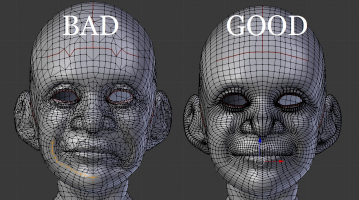Top 5 Best Books On Graph Theory
We've compiled a list of the best books on graph theory. They combine some graph theory resources for those just getting started with graph concepts and ... read more...business users who need the fundamentals, and some graph algorithm and theory resources for those with a more mathematical background or who are ready to go deeper.
-
Narsingh Deo is the Director of the Center for Parallel Computation at the University of Central Florida in Orlando and holds the Charles N. Millican Eminent Scholar's Chair in Computer Science. He previously served as the Department Chair and Professor of Computer Science at Washington State University.
This outstanding introductory treatment of graph theory and its applications has a long history of being used to teach advanced undergraduates and graduate students in all fields that require knowledge of this subject. The first nine chapters are an excellent overall introduction, requiring only a basic understanding of set theory and matrix algebra. Paths and circuits, trees and fundamental circuits, planar and dual graphs, vector and matrix representation of graphs, and other related topics are covered.
In Graph Theory with Applications to Engineering and Computer Science, one of the best books on graph theory, the remaining six chapters are more advanced, covering graph theory algorithms and computer programs, graphs in switching and coding theory, graph theory in electrical network analysis, graph theory in operations research, and other topics. Instructors can use these chapters in conjunction with the preceding material to teach courses in electrical engineering, computer science, operations research, and applied mathematics.
Author: Narsingh Deo
Link to buy: https://www.amazon.com/Applications-Engineering-Computer-Science-Mathematics-ebook/dp/B06XHZL8DC/
Ratings: 4.5 out of 5 stars (from 266 reviews)
Best Sellers Rank: #721,281 in Kindle Store
#15 in Graph Theory (Kindle Store)
#17 in Discrete Mathematics (Kindle Store)
#61 in Digital Design (Kindle Store)
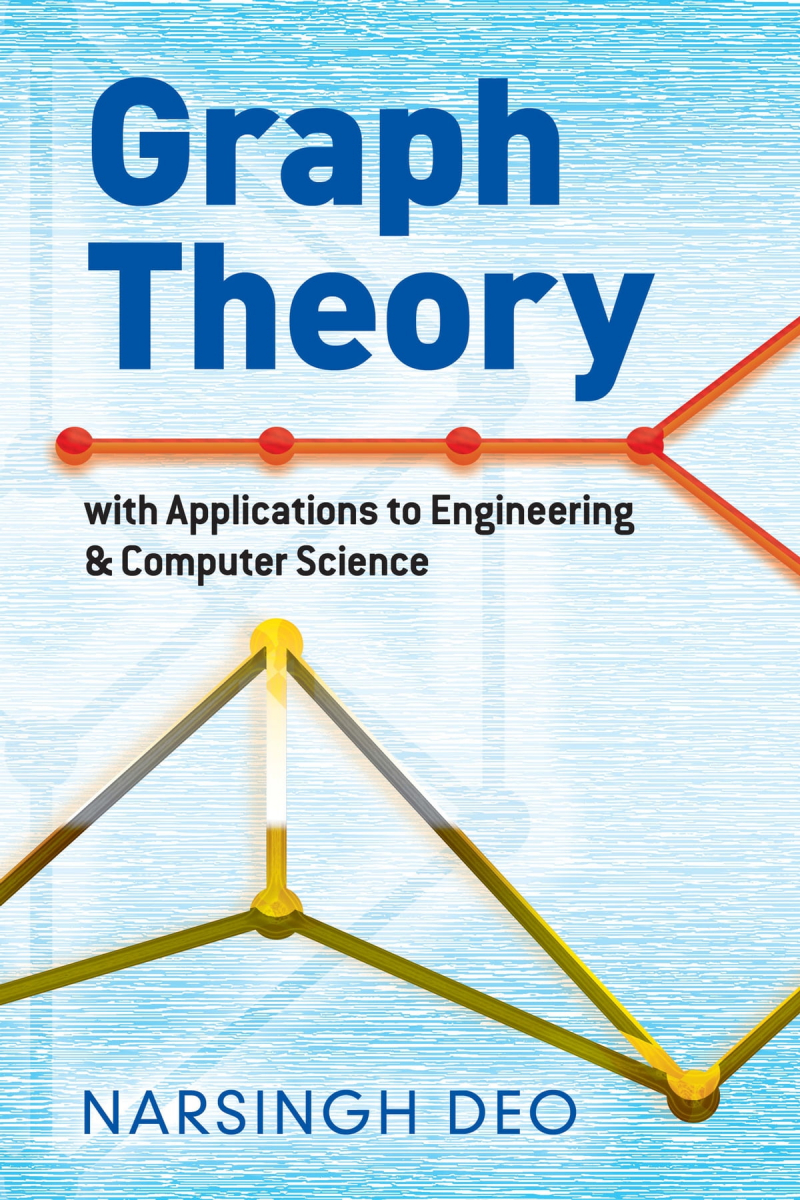
https://www.kobo.com/ 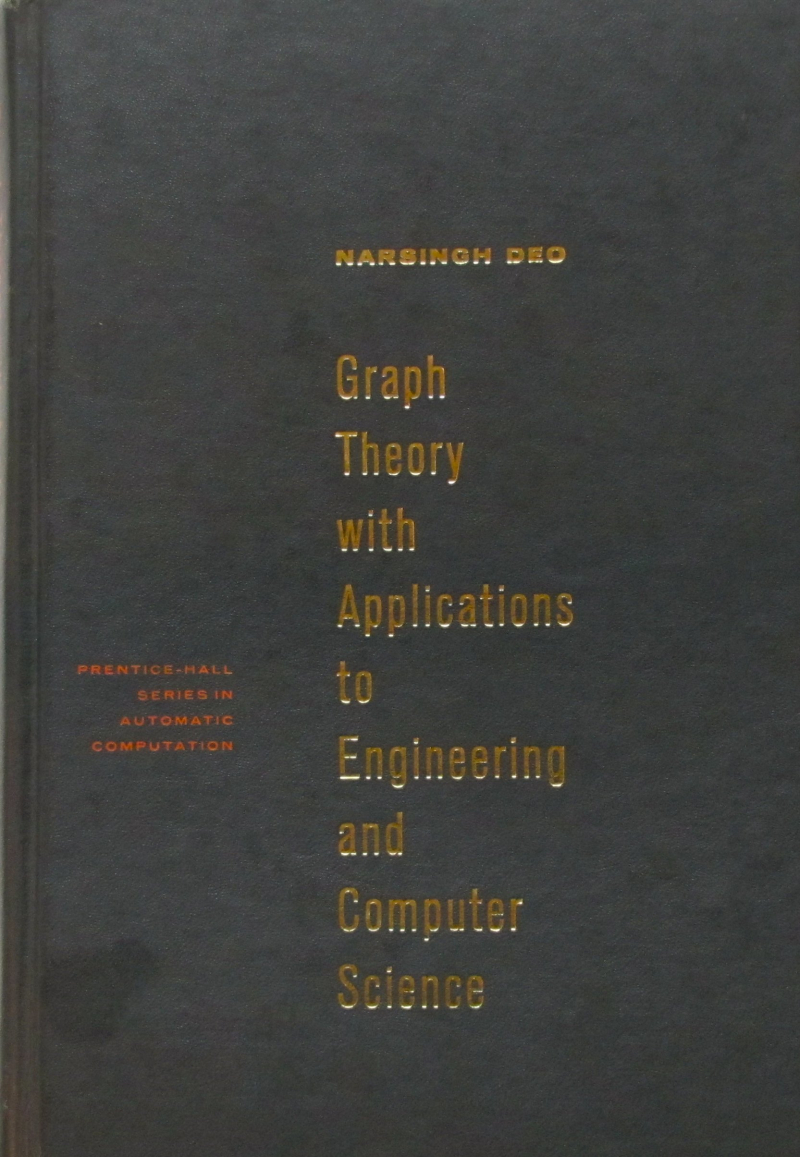
Amazon.in -
Stephen Few founded the consulting firm Perceptual Edge. He travels the world speaking, teaching, and consulting, and he publishes the quarterly Visual Business Intelligence Newsletter. He is also the author of Now You See It: Data Display for At-a-Glance Monitoring and Information Dashboard Design: Displaying Data for At-a-Glance Monitoring. Signal: Understanding What Matters in a World of Noise, and Simple Visualization Techniques for Quantitative Analysis.
Most quantitative information presentations are painfully designed, often to the point of misinformation. This issue, however, is rarely recognized and even less frequently addressed. We use tables and graphs to communicate quantitative information: the critical numbers that measure our organizations' health, identify opportunities, and forecast their future. Even the best information is useless if the story is not told well. Because almost no one has ever been trained to design tables and graphs for effective and efficient communication, this problem exists. Show Me the Number: Designing Tables and Graphs to Enlighten is the most user-friendly, practical, and all-encompassing guide to table and graph design available. It is among the best books on graph theory.
The second edition of Show Me the Numbers improves on the first by polishing the content throughout (including updated figures) and adding 91 pages of new content, which includes: 1) A new preface; 2) A new chapter titled "Silly Graphs That Are Best Forsaken," which alerts readers to some of the current misuses of graphs such as donut charts, circle charts, unit charts, and funnel charts; and 3) A new chapter titled "Silly Graphs That Are Best Forsaken." 3) "Telling Compelling Stories with Numbers," a new chapter about quantitative narrative; and 4) "Constructing Table Lens Displays in Excel," "Constructing Box Plots in Excel," and "Useful Color Palettes," new appendices.
Author: Stephen Few
Link to buy: https://www.amazon.com/Show-Me-Numbers-Designing-Enlighten/dp/0970601972/
Ratings: 4.5 out of 5 stars (from 317 reviews)
Best Sellers Rank: #102,825 in Books
#10 in Graph Theory (Books)
#75 in Running Meetings & Presentations (Books)
#252 in Decision-Making & Problem Solving
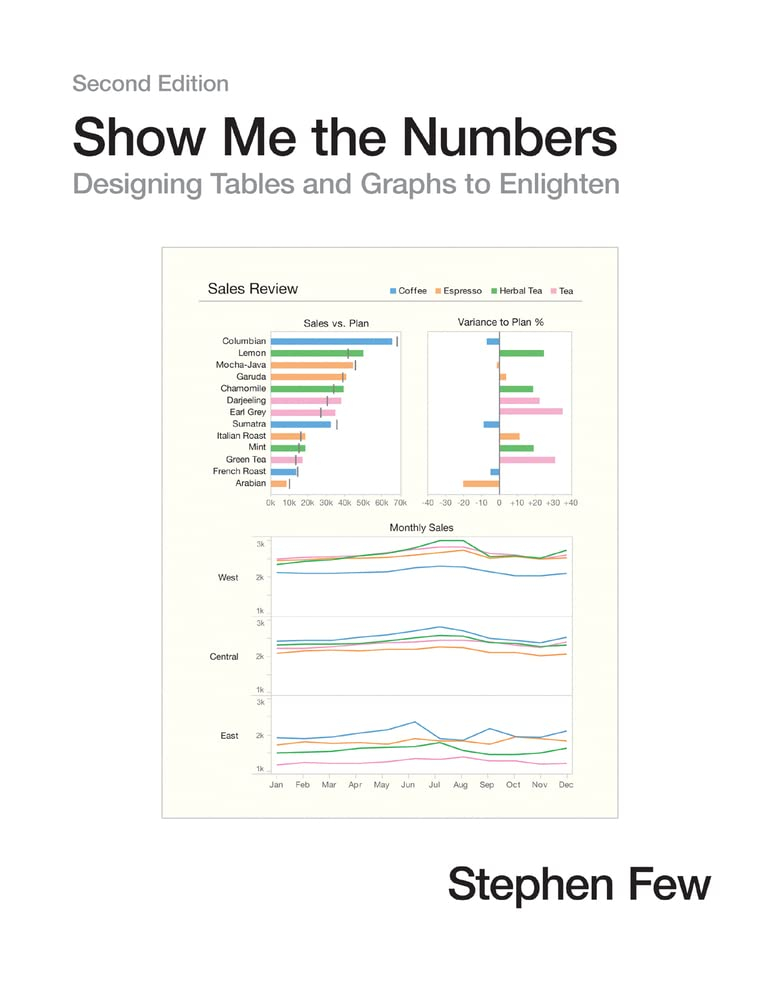
https://www.amazon.com/ 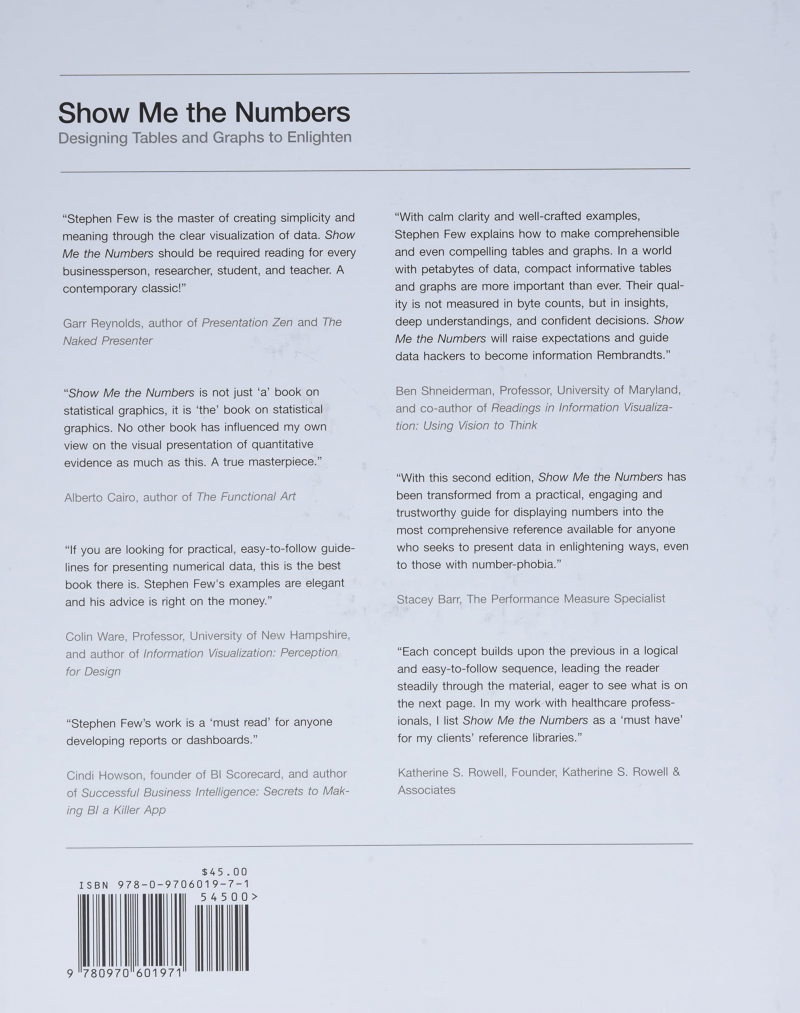
https://www.amazon.com/ -
Emory University's Ronald Gould is a Professor of Mathematics and Computer Science. He is known for his work in Hamiltonian graph theory and specializes in combinatorics and graph theory.
This introduction to graph theory focuses on well-known topics, covering fundamental techniques and addressing both algorithmic and theoretical issues. The algorithms are presented with only the most basic data structures and programming details. This thoroughly revised 1988 edition is ideal for computer scientists, advanced undergraduates, and graduate students of topology, algebra, and matrix theory. Graph Theory is regarded as one of the best books on graph theory.
The first subjects are fundamental concepts and notation, as well as elementary properties and operations, followed by examinations of paths and searching, trees, and networks. Following chapters investigate cycles and circuits, planarity, matchings, and independence. The text concludes with discussions of special topics and applications, as well as extremal theory. Exercises are scattered throughout the text. Dover (2012) reissue of the 1988 edition published by the Benjamin / Cummings Publishing Company in Menlo Park, California.
Author: Ronald Gould
Link to buy: https://www.amazon.com/Graph-Theory-Dover-Books-Mathematics/dp/0486498069/
Ratings: 4.7 out of 5 stars (from 12 reviews)
Best Sellers Rank: #254,887 in Books
#22 in Topology (Books)
#22 in Discrete Mathematics (Books)
#23 in Graph Theory (Books)
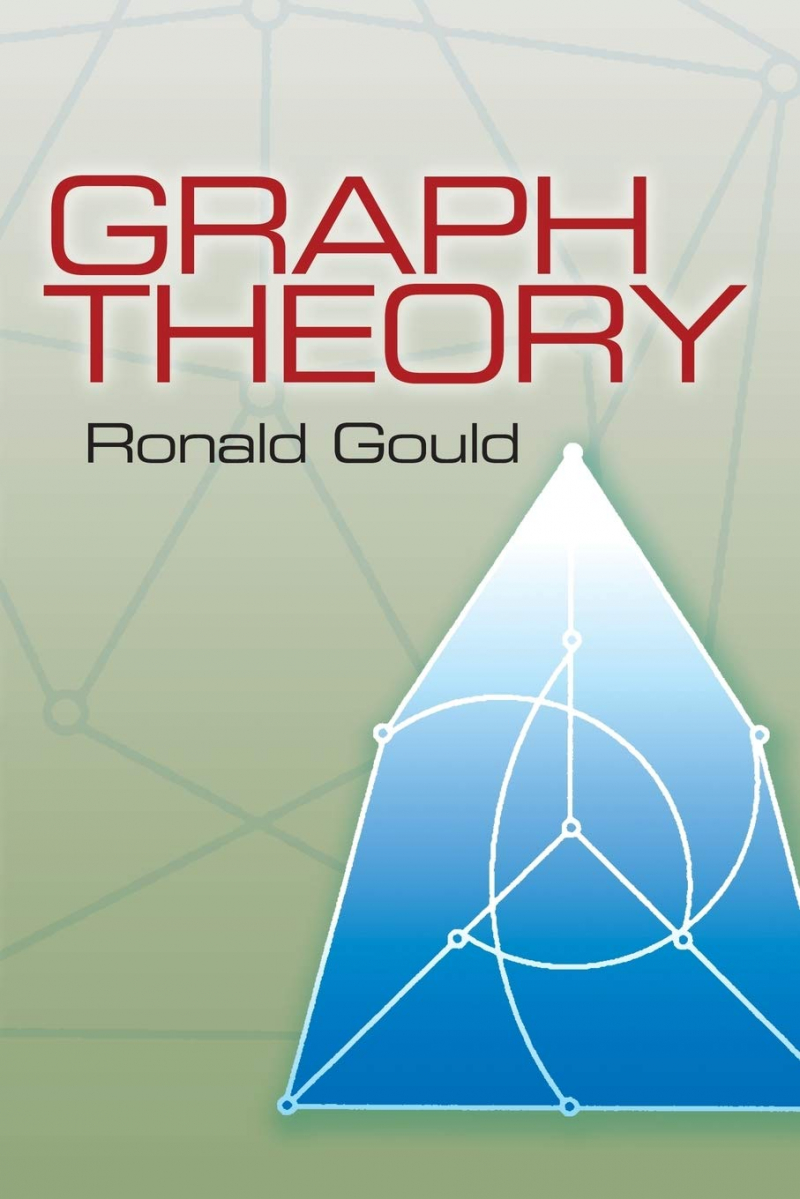
https://www.amazon.com/ 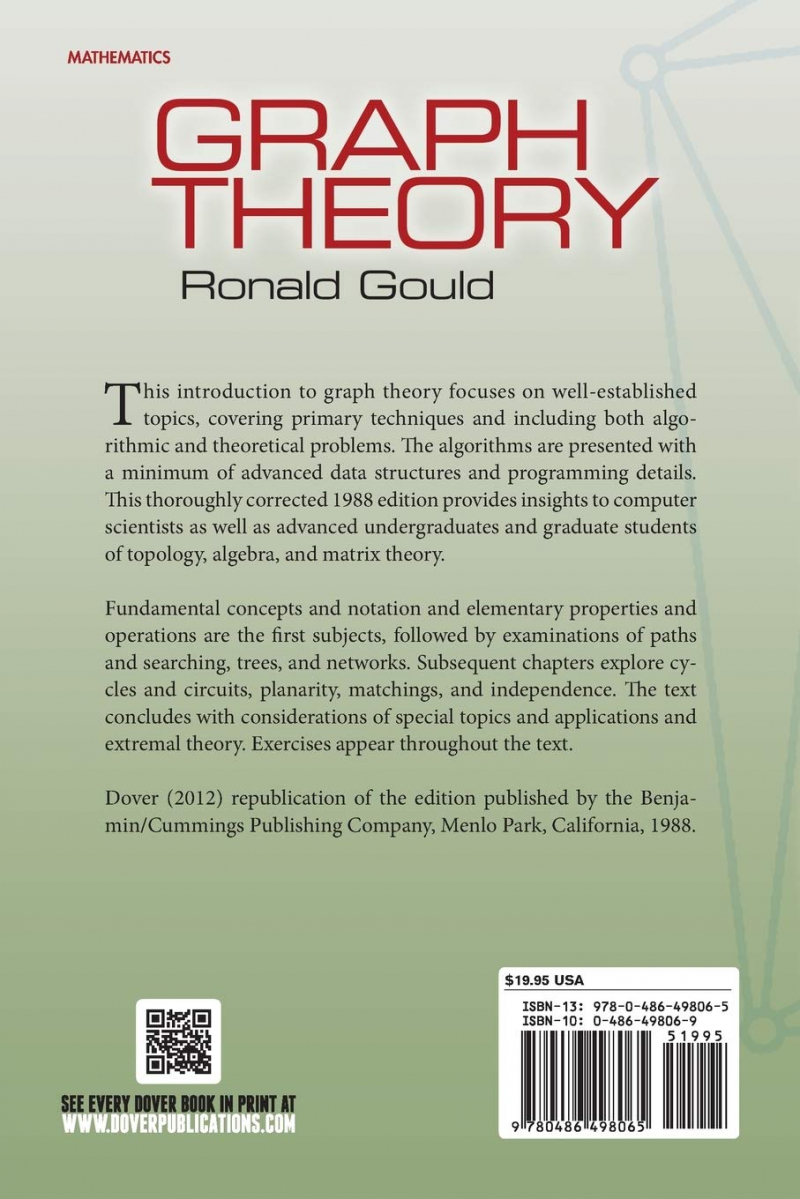
https://www.amazon.com/ -
Gerald Everett Jones, a finalist for the Eric Hoffer Award for "How to Lie with Charts," has managed major proposal and business analysis projects in the government, healthcare, and commercial sectors. He has written over 25 business and technical books on digital media production, including numerous how-to books on applications like Microsoft Excel and PowerPoint. He has hands-on experience in IT system development and was the project leader for the ARTIS computer graphics system, a forerunner of PowerPoint. Gerald is also a published novelist and the host of the GetPublished! Radio Show.
The definitive textbook on data visualization has been updated. There is new content on fake news and social media disinformation, metadata misinterpretation, and the uses and abuses of Big Data. You don't need to be taught how to lie if you use a computer to generate charts for meetings and reports; you're already doing it. You and your audience are probably unaware that your charts are untrustworthy. So you're getting away with it - at least until a manager, a sales prospect, or an investor makes a bad decision based on the information you provided. The principles of persuasive - and undistorted - visual communication are central to How to Lie with Charts. It is all about careful thought and clear expression.
Who would have thought that a book about charts and graphs could be so entertaining? It's an incredibly entertaining read (really) and a must-have reference for anyone who presents or analyzes data. Gerald employs wit and humor to explain concepts that we often take for granted, and he succeeds in teaching us how to deliver more effective presentations—while cautioning us to be wary of those who may lie using the same techniques!
Author: Gerald Everett Jones
Link to buy: https://www.amazon.com/gp/aw/d/0996543864/
Ratings: 3.8 out of 5 stars (from 19 reviews)
Best Sellers Rank: #1,624,935 in Books
#237 in Graph Theory (Books)
#1,211 in Running Meetings & Presentations (Books)
#4,840 in Communication Skills
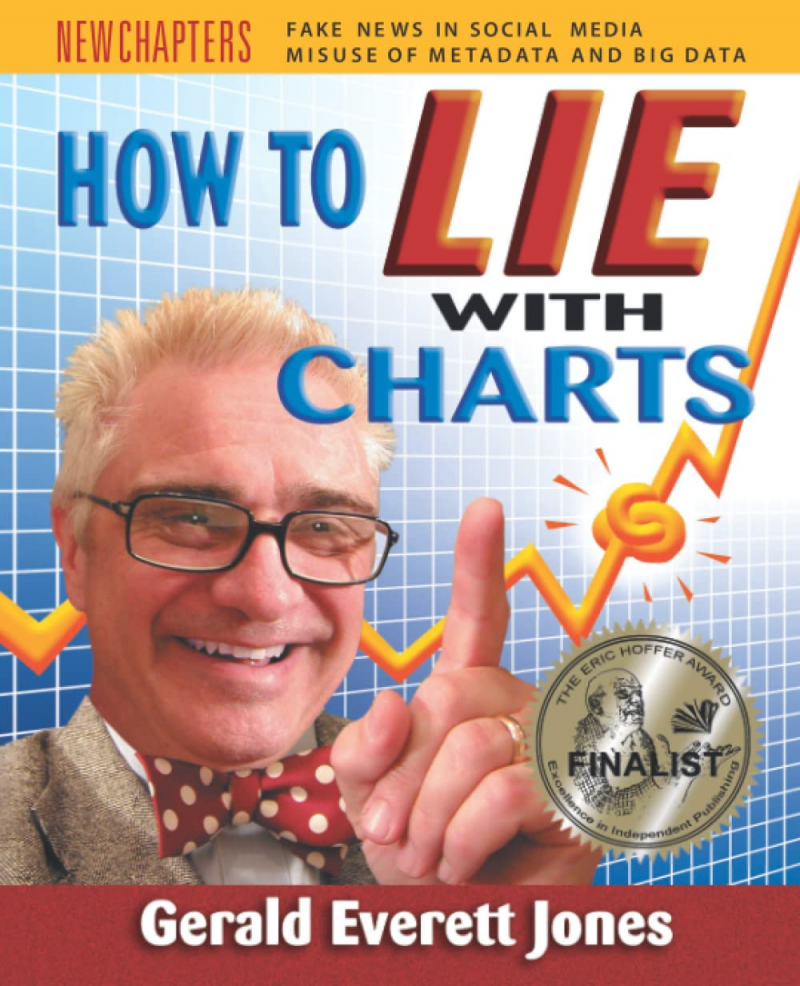
https://www.amazon.com/ 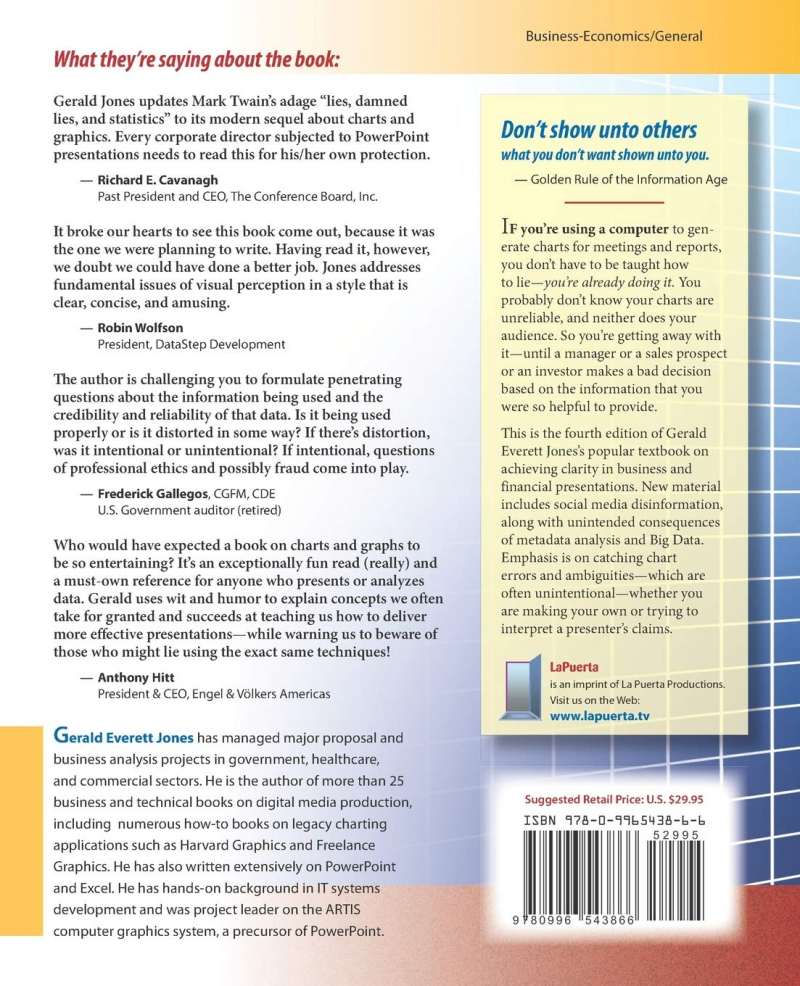
https://www.amazon.com/ -
Arthur Benjamin is a mathematics professor at Harvey Mudd College. Gary Chartrand is an emeritus mathematics professor at Western Michigan University. Ping Zhang is a mathematics professor at Western Michigan University.
Graph theory dates back several centuries and is based on the study of graphs, which are mathematical structures that show relationships between objects. Graph theory encompasses some of the most beautiful formulas in mathematics, as well as some of its most famous problems, and has applications in biology, computer science, transportation science, and other areas.Among the best books on graph theory, The Fascinating World of Graph Theory delves into the questions and puzzles that have been studied and, in many cases, solved using graph theory. This book examines the evolution of graph theory and the dynamic individuals who have contributed to the field's success. The authors introduce fundamental concepts while exploring a wide range of classic problems such as the Lights Out Puzzle, and each chapter includes math exercises for readers to enjoy. The Fascinating World of Graph Theory is an eye-opening journey into the world of graphs that offers exciting problem-solving possibilities for mathematics and beyond.
Author: Ping Zhang, Gary Chartrand and Arthur Benjamin
Link to buy: https://www.amazon.com/Fascinating-World-Graph-Theory/dp/0691175632/
Ratings: 4.6 out of 5 stars (from 36 reviews)
Best Sellers Rank: #503,348 in Books
#45 in Graph Theory (Books)
#843 in Mathematics (Books)
#1,115 in Pure Mathematics (Books)
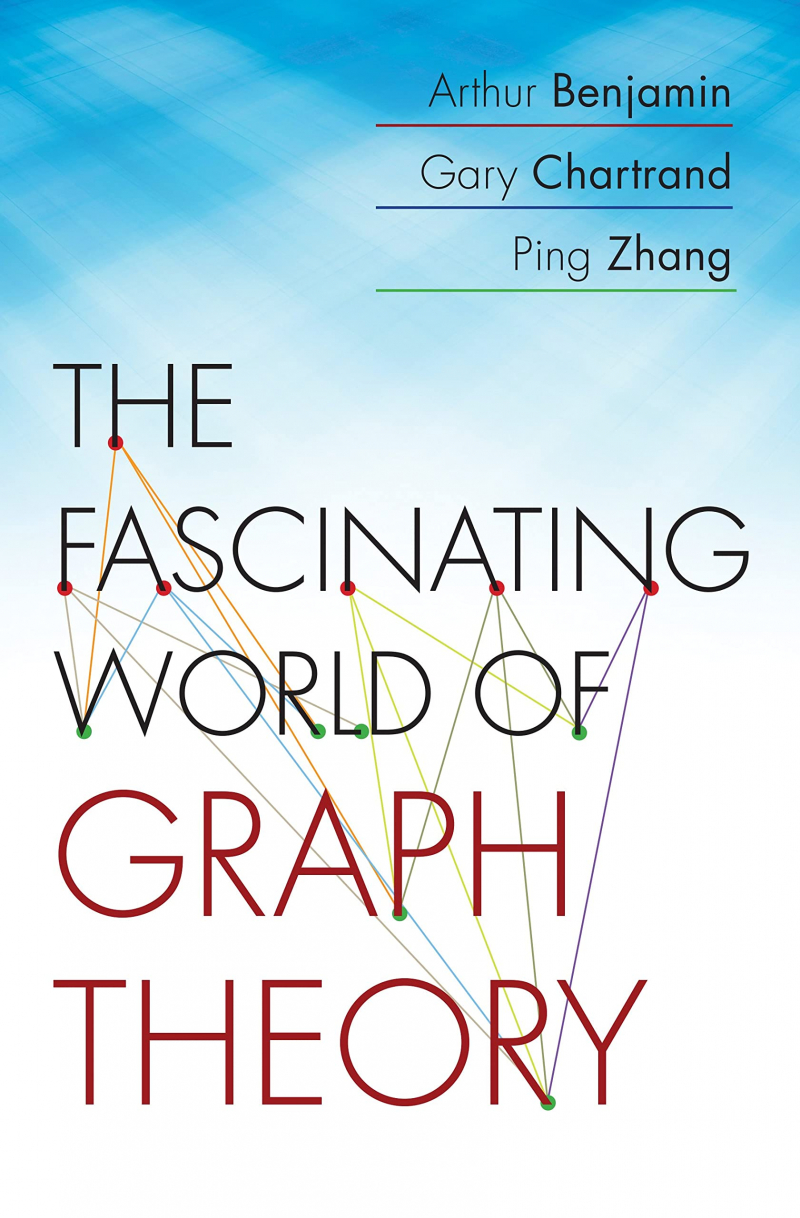
https://www.amazon.com/ 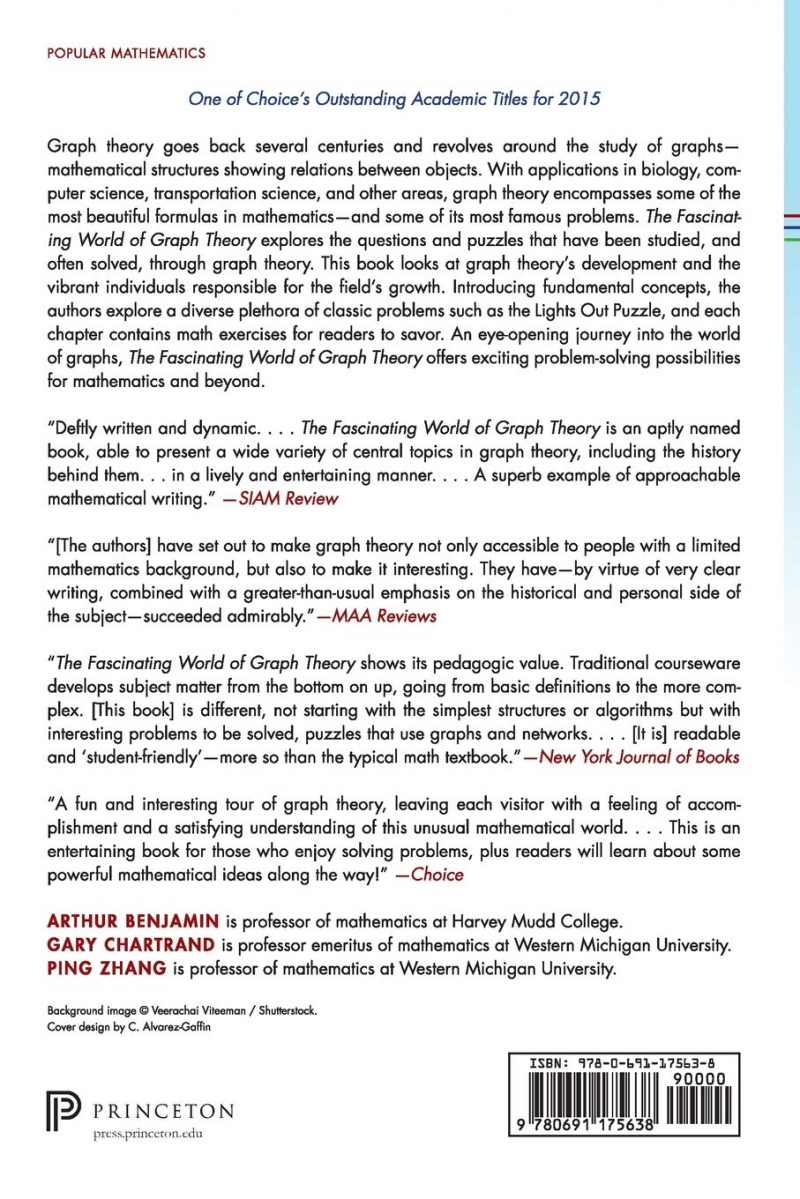
https://www.amazon.com/










